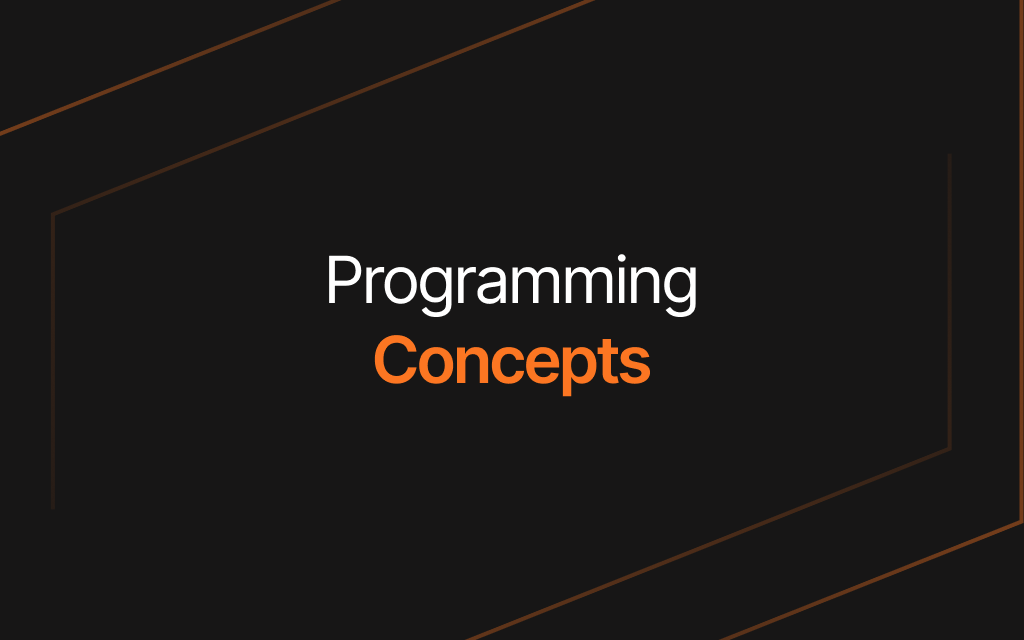The world of software development can be both exciting and competitive. To excel in this field, it’s essential to stay ahead and be well-prepared for your coding interviews. In this guide, we will discuss some of the most common interview questions, along with their answers, to help you stand out in your application process. Remember, practice makes perfect, so let’s dive in!

Data Structures and Algorithms
Arrays
1. Find the missing number in an array
We can solve this problem by calculating the sum of integers from 1 to n and subtracting the sum of the elements in the given array. This will give us the missing number. For example, if our array is [1, 2, 4, 6, 3, 7, 8], the missing number is 5.
2. Reverse an array in-place
To reverse an array in place, we can use a two-pointer approach. We initialize two pointers at the beginning and end of the array and swap the values at the pointer locations. We increment the first pointer and decrement the second pointer until they meet in the middle.
3. Two Sum problem
The Two Sum problem involves finding two elements in an array that add up to a given target value. We can solve this problem using a hash map. We iterate through the array and check if the compliment (target – current element) is in the hash map. If it is, we return the indices of the current element and its complement. Otherwise, we add the current element to the hash map.
Strings
1. Palindrome check
A palindrome is a string that reads the same forwards and backward. To check if a given string is a palindrome, we can compare characters at the beginning and end of the string and move inwards. If all characters match, the string is a palindrome.
2. Longest common prefix
To find the longest common prefix among a set of strings, we can iterate through the characters of the first string, comparing each character with the corresponding character in the other strings. The process stops when a mismatch occurs, and the prefix up to that point is returned.
3. Anagram detection
An anagram is a word formed by rearranging the letters of another word. We can determine if two strings are anagrams by checking if the character frequency counts are equal for both strings.
Linked Lists
1. Detect a cycle in a linked list
To detect a cycle in a linked list, we can use Floyd’s cycle-finding algorithm. It involves using two pointers, one slow and one fast, moving through the list. If there is a cycle, the two pointers will eventually meet; otherwise, the fast pointer will reach the end of the list.
2. Merge two sorted linked lists
To merge two sorted linked lists, we can use a recursive approach or an iterative approach. We compare the head nodes of both lists and merge the nodes based on their values. We continue the process until one list is exhausted, and then append the remaining nodes of the other list.
3. Reverse a linked list
We can reverse a linked list using an iterative or recursive approach. In the iterative method, we maintain three pointers: previous, current, and next. We traverse the list, updating the next pointer of the current node to the previous node.
Trees
1. Check if a binary tree is balanced
A binary tree is balanced if the height difference between the left and right subtrees of any node is no more than 1. We can determine this using a depth-first traversal, calculating the height of the left and right subtrees at each node, and checking if the difference is within the allowed range.
2. Find the lowest common ancestor in a binary tree
To find the lowest common ancestor (LCA) of two nodes in a binary tree, we can use a recursive approach. If the current node is either of the given nodes or is null, return the current node. Recursively call the LCA function on the left and right subtrees. If both left and right calls return non-null values, the current node is the LCA. Otherwise, return the non-null value from the left or right subtree calls.
3. In-order, pre-order, and post-order tree traversal
In-order, pre-order, and post-order are three types of depth-first traversal methods for binary trees:
- In-order traversal: Left subtree -> Root node -> Right subtree
- Pre-order traversal: Root node -> Left subtree -> Right subtree
- Post-order traversal: Left subtree -> Right subtree -> Root node
Graphs
1. Implement a Depth-First Search (DFS)
DFS is a graph traversal algorithm that explores as far as possible along a branch before backtracking. We can implement DFS using recursion or an explicit stack. Starting from a source node, we mark it as visited and recursively visit all its adjacent unvisited nodes.
2. Implement a Breadth-First Search (BFS)
BFS is a graph traversal algorithm that explores all neighbors at the current depth before moving on to nodes at the next depth level. We can implement BFS using a queue. Starting from a source node, we enqueue it, mark it as visited, and process its neighbors, enqueuing each unvisited neighbor.
3. Shortest path algorithms (Dijkstra’s and Bellman-Ford)
Dijkstra’s and Bellman-Ford are two algorithms for finding the shortest path between nodes in a weighted graph:
| Shortest Path Algorithms | Description |
| Dijkstra’s algorithm | Uses a priority queue to find the shortest path in a graph with non-negative edge weights. |
| Bellman-Ford algorithm | Uses dynamic programming to find the shortest path, even in graphs with negative edge weights, but cannot handle negative cycles. |

Programming Concepts
Recursion
Recursion is a vital technique for coding applicants, as it helps solve complex problems by breaking them into smaller, similar subproblems. Mastering recursion enhances your problem-solving skills, boosting your competitiveness in the software development field.
| Common Coding Problems | Description |
|---|---|
| Fibonacci series | The Fibonacci series is a sequence of numbers where each number is the sum of the two preceding ones, starting from 0 and 1. We can calculate the nth Fibonacci number using a recursive approach, but memoization or an iterative approach is more efficient due to overlapping subproblems. |
| Factorial calculation | The factorial of a non-negative integer n is the product of all positive integers less than or equal to n. We can calculate n! recursively by multiplying n with the factorial of n-1, with a base case of 0! = 1. |
| Tower of Hanoi | The Tower of Hanoi is a classic recursive problem involving moving a stack of disks from one peg to another, using a third peg, and following certain rules. We can solve this problem recursively by breaking it down into smaller subproblems and moving the top n-1 disks to the auxiliary peg before moving the largest disk to the target peg. |
Dynamic Programming
Dynamic programming is an essential technique for coding applicants to solve complex problems efficiently. It uses a top-down or bottom-up approach to break down problems into smaller subproblems, storing and reusing their solutions for faster problem-solving. Mastering dynamic programming enhances your problem-solving skills and makes you a more competitive software developer.
1. Longest Increasing Subsequence
The Longest Increasing Subsequence (LIS) problem is to find the length of the longest subsequence of a given sequence such that all elements of the subsequence are sorted in increasing order. We can solve this problem using dynamic programming by maintaining an array of LIS lengths and updating it as we traverse the input sequence.
2. Knapsack problem
The Knapsack problem involves finding the maximum value of items that can be included in a knapsack with a given weight capacity. We can solve this problem using dynamic programming by constructing a table with dimensions corresponding to the number of items and the weight capacity of the knapsack. We fill the table by comparing the optimal value of including or excluding each item, considering the item’s weight and value.
3. Coin change problem
The Coin Change problem is to find the minimum number of coins needed to make a given amount using coins of certain denominations. We can solve this problem using dynamic programming by constructing an array that holds the minimum number of coins needed for each amount up to the target amount. We fill the array by considering all coin denominations and updating the minimum coin count for each subproblem.
Bit Manipulation
1. Counting the number of set bits in an integer
To count the number of set bits (1s) in an integer, we can use bitwise AND operation and right shift operation in a loop. In each iteration, we AND the number with 1 and add the result to a counter, then right-shift the number by one position.
2. Swap two numbers without using a temporary variable
We can swap two numbers without using a temporary variable by using bitwise XOR operation. First, we XOR the two numbers and store the result in the first number. Then, we XOR the first number with the second number and store the result in the second number. Finally, we XOR the second number with the first number and store the result in the first number.
3. Find the only non-repeating element in an array
To find the only non-repeating element in an array where all other elements appear twice, we can use the bitwise XOR operation. We XOR all the elements in the array, and the result will be the non-repeating element.
Object-Oriented Programming

A. Principles of OOP
Grasping Object-Oriented Programming (OOP) principles are essential for coding applicants, as it enables the creation of robust and scalable software. By mastering core OOP concepts like inheritance, encapsulation, and polymorphism, you’ll excel in complex development projects and strengthen your position in the job market.
| Principles of OOP | Description |
|---|---|
| Inheritance | Inheritance is a principle of OOP that allows a class to inherit properties and methods from a parent class, enabling code reusability and a hierarchical class structure. |
| Encapsulation | Encapsulation is a principle of OOP that restricts access to certain components of an object, ensuring that internal state and functionality can only be accessed or modified through defined methods. |
| Polymorphism | Polymorphism is a principle of OOP that allows objects of different classes to be treated as objects of a common superclass, enabling a single interface to represent different types and facilitating extensibility. |
B. Design Patterns
For coding applicants, mastering design patterns is crucial to developing efficient and maintainable software. By learning these proven solutions to common design challenges, you’ll enhance your problem-solving skills and become a more competitive candidate in the software development field.
| Design Patterns | Description |
|---|---|
| Singleton pattern | The Singleton pattern ensures that a class has only one instance and provides a global point of access to that instance, useful for managing shared resources or providing centralized configuration. |
| Factory pattern | The Factory pattern is a creational design pattern that provides an interface for creating objects in a superclass, allowing subclasses to decide which class to instantiate. |
| Observer pattern | The Observer pattern is a behavioral design pattern that defines a one-to-many dependency between objects, so that when one object’s state changes, all its dependents are notified and updated automatically. |
C. SOLID Principles
Mastering the SOLID principles is crucial for coding applicants, as it leads to maintainable and scalable software. By understanding and applying these five core design principles, you’ll create cleaner, modular code and become a more competitive software developer in the job market.
| SOLID Principles | Description |
|---|---|
| Single Responsibility Principle (SRP) | SRP states that a class should have only one reason to change, ensuring that each class has a single responsibility and promoting separation of concerns. |
| Open/Closed Principle (OCP) | OCP states that software entities should be open for extension but closed for modification, enabling new functionality to be added without modifying existing code. |
| Liskov Substitution Principle (LSP) | LSP states that objects of a derived class should be able to replace objects of the base class without affecting the correctness of the program, ensuring that a derived class upholds the contract established by its base class. |
We’ve covered a wide range of topics, from data structures and algorithms to programming concepts and object-oriented programming. Mastering these interview questions and answers will help you excel in your coding application process. Keep practicing, stay curious, and don’t forget to brush up on your problem-solving skills. Good luck!
Frequently Asked Questions (FAQs)
1. How can I best prepare for coding interviews?
To prepare for coding interviews, practice solving problems on platforms like LeetCode, HackerRank, and CodeSignal. Study data structures, algorithms, and programming concepts, and review your chosen programming language’s syntax and libraries. Additionally, work on your problem-solving, communication, and time-management skills.
2. What programming language should I use for coding interviews?
Choose a programming language that you are comfortable with and that is widely used in the industry, such as Python, Java, C++, or JavaScript. Make sure you are proficient in the language’s syntax, libraries, and best practices.
3. How important are data structures and algorithms in coding interviews?
Data structures and algorithms are fundamental to coding interviews. Interviewers often test your understanding of data structures like arrays, linked lists, trees, and graphs, as well as algorithms like sorting, searching, dynamic programming, and graph traversal. Having a strong foundation in these topics is essential for success in coding interviews.
4. How can I practice problem-solving for coding interviews?
To practice problem-solving, work on coding problems from online platforms, participate in coding competitions, and collaborate on projects with peers. Additionally, practice explaining your thought process and reasoning out loud, as this is an essential skill for coding interviews.
5. What is the best way to handle a question I don’t know the answer to during an interview?
If you encounter a question you don’t know the answer to during an interview, remain calm and try to break down the problem into smaller parts. Ask clarifying questions to better understand the problem, and think aloud to demonstrate your thought process. If you’re still unsure, discuss a similar problem you’ve encountered and how you approached it, or ask the interviewer for a hint. Remember, interviewers, are often more interested in your problem-solving approach and ability to learn than whether you know the answer immediately.

Keen to Work With Us?
At Jin Design, we offer website design and development services that can help you reach your business objectives while highlighting your brand’s unique identity. Our team of experts will work closely with you to create a custom website that meets your specific requirements.
Our services cover the latest design trends and innovative technologies, such as responsive design, e-commerce integration, and personalized functionality.
If you’re interested in starting a website project that truly reflects your brand, please don’t hesitate to contact us today. We’ll help you unleash the full potential of a website that captures your brand essence.







